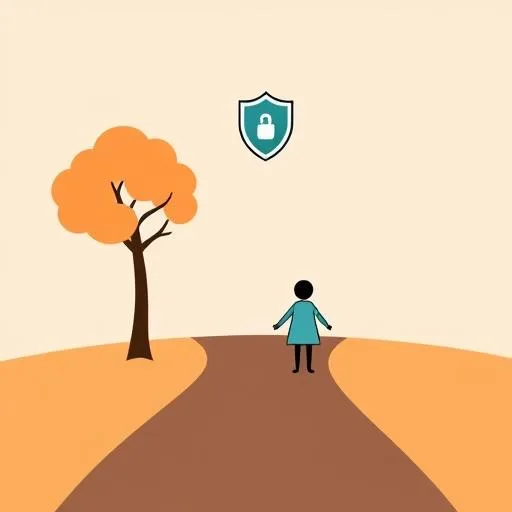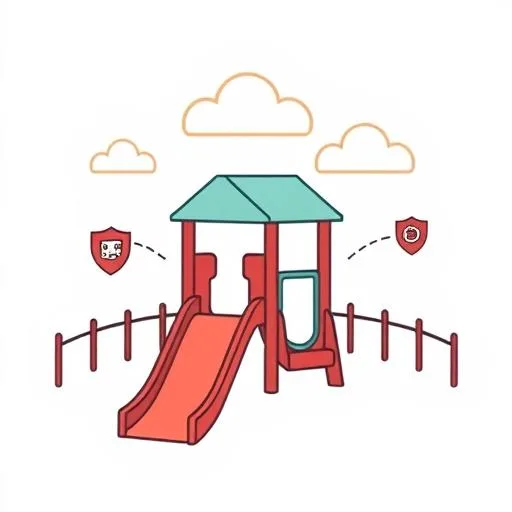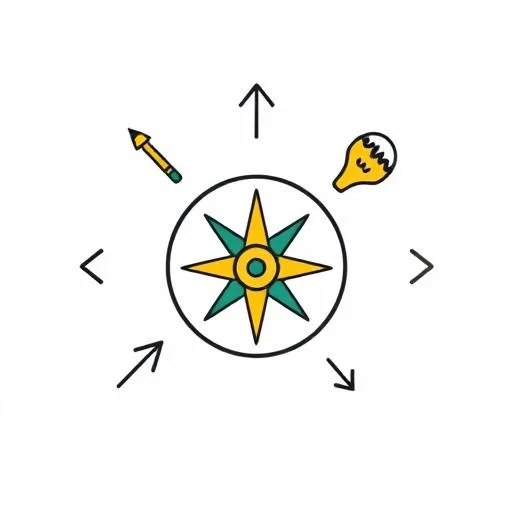
Walking home from the park today, under that perfect early-September sun warming our backs, my daughter chatted excitedly about a new game she played with her friends. That pure, simple joy—it hit me. As I held her hand waiting to cross the street, I was her firewall, her antivirus, her real-world security protocol. It’s instinctive, right? We teach them to look both ways. But in that moment, her innocent joy made me wonder—how do we protect them as they start exploring those digital streets too?
It’s wild to think that while we’re busy with our day-to-day, a handful of companies mentioned in the news—names like Alphabet, Palo Alto Networks, and CrowdStrike—are in a constant, high-stakes battle to build the guardrails for that invisible world. When I saw these names mentioned as top stocks to watch, it made me pause. Beyond the financial charts, what can their mission teach us about our most important job?
How Do Cybersecurity Guardians Protect the Invisible Playground?

Okay, can I tell you what gets me SUPER excited? The moment we shift the way we think about the internet—from something to fear, to something to guide our kids through. Think of the internet like the most incredible playground ever built. It has slides that lead to new worlds, swings that let you talk to grandma across the ocean, and sandboxes where you can build anything you can imagine. AMAZING! But like any great playground, it needs supervision and safety checks.
This is where companies like Fortinet and CrowdStrike come in. They’re the master architects and tireless park rangers of this digital wonderland. They design the un-climbable fences (firewalls), install the soft-landing rubber mats (threat detection), and patrol the grounds to keep things safe and fun. And the need for them is growing like crazy—from billions to trillions by the time our kids are teens! That’s not just a business trend; it’s a neon signal flashing: the digital world is here to stay.
The flip side? The cost of not being safe is massive—expected to hit over $10.5 trillion. It’s a powerful reminder that while our kids are just playing, the world they’re playing in is incredibly complex. That’s why even big tech companies like Dell Technologies and Alphabet are deeply invested in it.
How Can We Build a Family Digital Firewall Like the Pros?

So, knowing all this, we can’t just outsource our kids’ safety to the big companies. They build the stadium, but we’re the coaches on the field. The strategies these firms use to protect massive networks offer some really smart blueprints for our own family “networks.” And no, you don’t have to be an IT wizard!
First, think like Palo Alto Networks, all about proactive defense. They don’t wait for threats—they prevent them. For us parents, that means co-creating a family tech plan. It’s not about laying down the law from on high; it’s a conversation. We can talk about why we don’t share our home address online or why we only connect with people we know in real life. It’s about building the “why” into their hearts, not just programming a rule into a device. That deep bond of compassion and care, we call it jeong in our culture—and it’s exactly what we bring to digital protection.
Then there’s CrowdStrike’s approach—constant monitoring and rapid response. For families, that’s making online life a part of everyday talk. Same way I ask, “How was school?”—I also ask, “See anything cool or weird online?” It turns the scary one-time “internet safety talk” into a low-pressure, ongoing conversation. It’s our family’s threat detection system, powered by trust.
How Do We Raise Empowered Digital Navigators, Not Just Protected Kids?

Here’s what I’m most fired up about. Our real goal isn’t to build a digital fortress. It’s to raise kids who can explore safely, think critically, and connect with kindness. We’re not raising kids afraid of the web—we’re raising the next generation of savvy, kind, and resilient digital citizens.
This is where the spirit of companies like Alphabet and Dell comes in. They don’t just build walls—they build tools for creation. We can do the same. Instead of just limiting screen time, let’s reframe it as launch time. What if we used a tablet to design a dream treehouse? Or explored apps about the stars we gaze at during our short evening walks home from school? It’s not about restriction—it’s about empowerment.
A fun, real-life twist: why not co-create a “Family Digital Explorer’s License”? Together, we can come up with our own core principles—like “Be Kind,” “Stay Curious,” and “Ask for Help.” Turning that into a family project turns abstract rules into a shared mission. It’s not about controlling them—it’s about equipping them with a compass and cheering them on as they explore.
What’s the Real ROI of Cybersecurity Parenting? Trust and Connection

At the end of the day, news headlines might talk about growing stock values, but the real ROI for us parents is something far deeper: a relationship with our kids built on trust and connection. The digital world isn’t a boogeyman. It’s the landscape our kids are growing up in. Our job? To walk it with them.
That clear sky this afternoon felt full of potential. The world is big, bright, and full of possibilities. And by borrowing a few strategies from the world’s best digital defenders, we can offer our little ones a space where they can learn, create, and connect—while always feeling safe. That feeling—of giving your child both roots and wings? That’s not a stock ticker. It’s the ultimate investment.
Source: Best Cybersecurity Stocks To Add to Your Watchlist – September 5th, ETF Daily News, 2025/09/07
